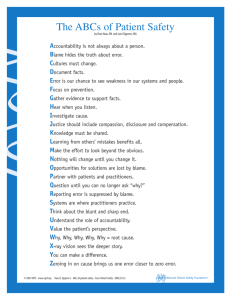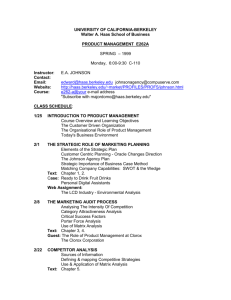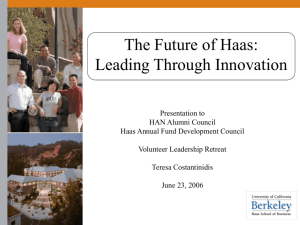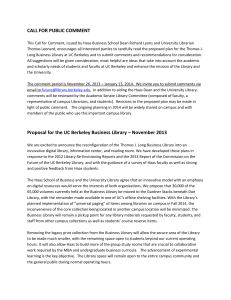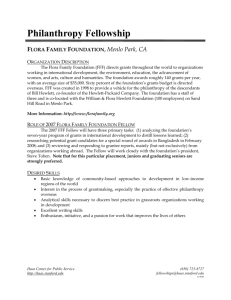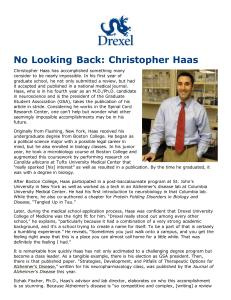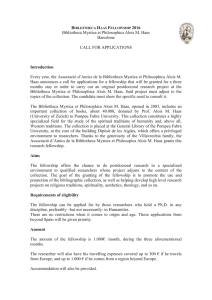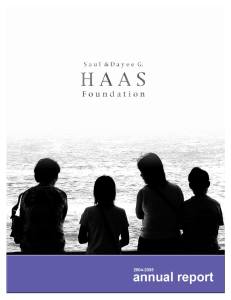Music Review: Georg Friedrich Haas' Revelatory Romp in the Dark
advertisement
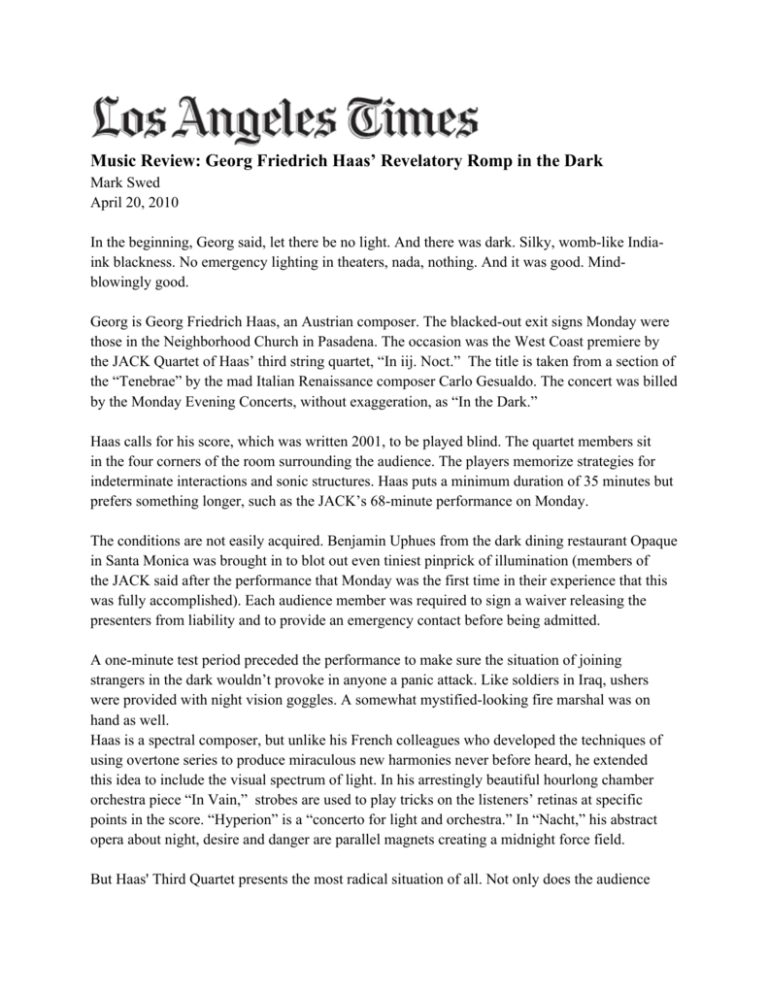
Music Review: Georg Friedrich Haas’ Revelatory Romp in the Dark Mark Swed April 20, 2010 In the beginning, Georg said, let there be no light. And there was dark. Silky, womb-like Indiaink blackness. No emergency lighting in theaters, nada, nothing. And it was good. Mindblowingly good. Georg is Georg Friedrich Haas, an Austrian composer. The blacked-out exit signs Monday were those in the Neighborhood Church in Pasadena. The occasion was the West Coast premiere by the JACK Quartet of Haas’ third string quartet, “In iij. Noct.” The title is taken from a section of the “Tenebrae” by the mad Italian Renaissance composer Carlo Gesualdo. The concert was billed by the Monday Evening Concerts, without exaggeration, as “In the Dark.” Haas calls for his score, which was written 2001, to be played blind. The quartet members sit in the four corners of the room surrounding the audience. The players memorize strategies for indeterminate interactions and sonic structures. Haas puts a minimum duration of 35 minutes but prefers something longer, such as the JACK’s 68-minute performance on Monday. The conditions are not easily acquired. Benjamin Uphues from the dark dining restaurant Opaque in Santa Monica was brought in to blot out even tiniest pinprick of illumination (members of the JACK said after the performance that Monday was the first time in their experience that this was fully accomplished). Each audience member was required to sign a waiver releasing the presenters from liability and to provide an emergency contact before being admitted. A one-minute test period preceded the performance to make sure the situation of joining strangers in the dark wouldn’t provoke in anyone a panic attack. Like soldiers in Iraq, ushers were provided with night vision goggles. A somewhat mystified-looking fire marshal was on hand as well. Haas is a spectral composer, but unlike his French colleagues who developed the techniques of using overtone series to produce miraculous new harmonies never before heard, he extended this idea to include the visual spectrum of light. In his arrestingly beautiful hourlong chamber orchestra piece “In Vain,” strobes are used to play tricks on the listeners’ retinas at specific points in the score. “Hyperion” is a “concerto for light and orchestra.” In “Nacht,” his abstract opera about night, desire and danger are parallel magnets creating a midnight force field. But Haas' Third Quartet presents the most radical situation of all. Not only does the audience wonder what to expect but we question whether we can handle the situation. I laughed off the waiver and then, after an initial thrill of enveloping darkness, got nervous. The sensation didn’t last more than a minute and was probably the result of the power of suggestion. But it did prove to me the power of suggestion. From then on I knew that this was an environment and an experience not to be taken lightly. That sounds in the dark have a special magic is hardly a surprise. Take away one sense and another will gain new authority. Still, it was impossible to anticipate the primal emotions that the JACK (violinists Christopher Otto and Ari Streisfeld, violist John Pickford Richards and cellist Kevin McFarland) could create from the start with barely audible squeals that eventually led to a wide range of string effects. The big chords made from harmonics made the biggest impression on me, because overtones affect parts of our brain as a psychedelic drug might. Even when you can see the instruments, these ethereal sounds become hard to place in space. In the dark, they are profoundly disorienting. Gesualdo does make a gorgeous appearance in a brief quote and there are a few Webern-esque tight melodic figures. But Haas’ quartet mainly serves to take a listener inside oneself, and familiar sounds are but flimsy reminders of reality. I found that the quartet profoundly dismantled my sense of linear time. Time seemed so slow at points that I could space out without missing anything. When the JACK got a bit rambunctious – the score calls for players to invite each other to join in or reject certain musical strategies and there is even room for competition – a listener could feel part of the exciting action. Ultimately, though, each of us, in this pitch-black, was alone, in our personal experiences yet acutely conscious of neighbors. I heard no coughs and only minimal shuffling. Along with fear of the dark, there was the fear of falling asleep. But for me, Haas all but surgically tapped into the part of the brain that controls exhilaration. Others I spoke with after the concert agreed that in this musical new world sleep seemed next to impossible. Neuroscientists take note. The lights came on slowly after about a minute of silence, when distant traffic sounds and the first significant amount of audible breathing and shuffling became the dominant stimulus. We were gently guided awake as the Pasadena evening became a new light and the city's fire marshal surely had plenty to report to his buddies at the station house.

